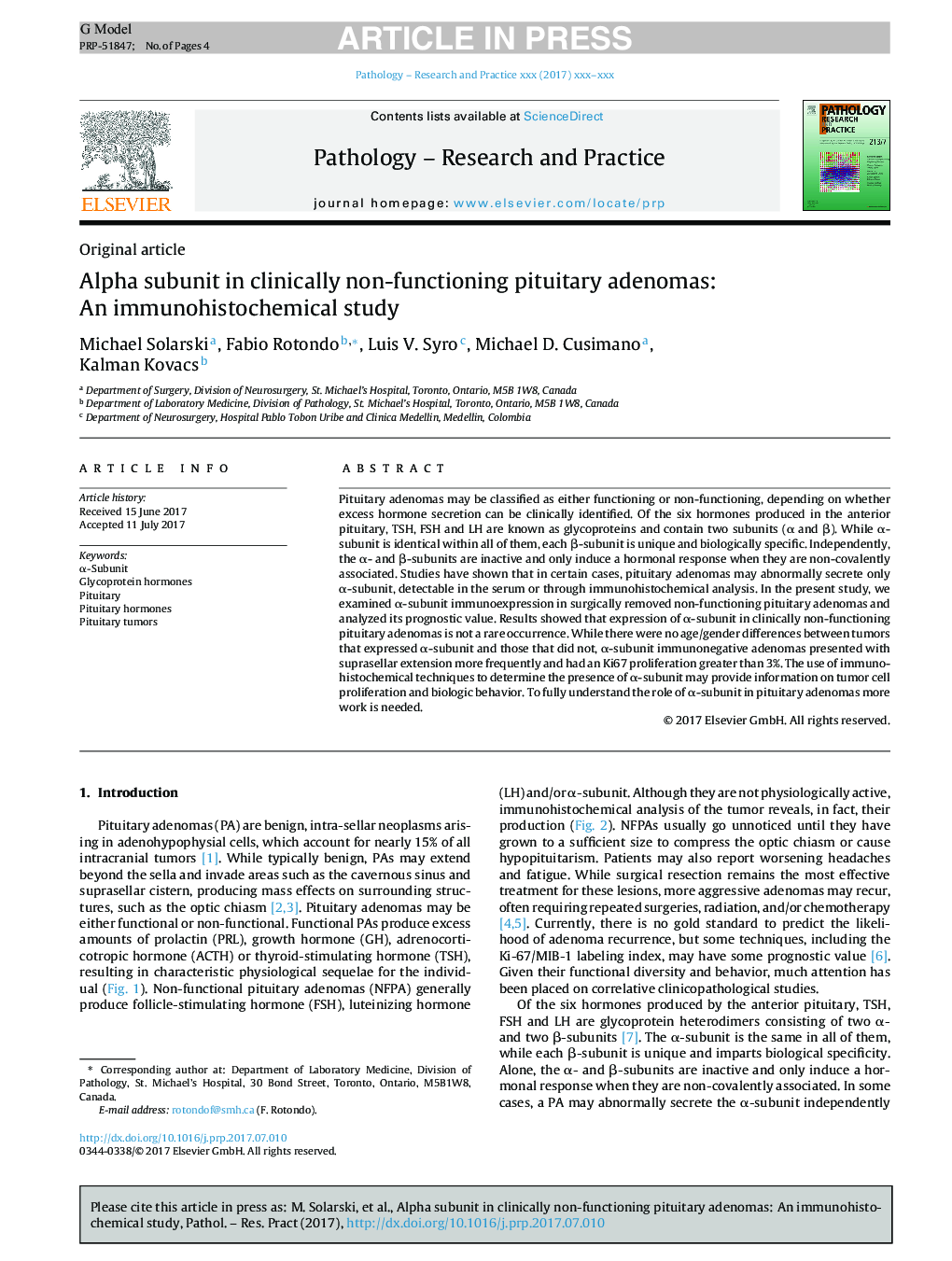| Article ID | Journal | Published Year | Pages | File Type |
|---|---|---|---|---|
| 8458535 | Pathology - Research and Practice | 2017 | 4 Pages |
Abstract
Pituitary adenomas may be classified as either functioning or non-functioning, depending on whether excess hormone secretion can be clinically identified. Of the six hormones produced in the anterior pituitary, TSH, FSH and LH are known as glycoproteins and contain two subunits (α and β). While α-subunit is identical within all of them, each β-subunit is unique and biologically specific. Independently, the α- and β-subunits are inactive and only induce a hormonal response when they are non-covalently associated. Studies have shown that in certain cases, pituitary adenomas may abnormally secrete only α-subunit, detectable in the serum or through immunohistochemical analysis. In the present study, we examined α-subunit immunoexpression in surgically removed non-functioning pituitary adenomas and analyzed its prognostic value. Results showed that expression of α-subunit in clinically non-functioning pituitary adenomas is not a rare occurrence. While there were no age/gender differences between tumors that expressed α-subunit and those that did not, α-subunit immunonegative adenomas presented with suprasellar extension more frequently and had an Ki67 proliferation greater than 3%. The use of immunohistochemical techniques to determine the presence of α-subunit may provide information on tumor cell proliferation and biologic behavior. To fully understand the role of α-subunit in pituitary adenomas more work is needed.
Related Topics
Life Sciences
Biochemistry, Genetics and Molecular Biology
Cancer Research
Authors
Michael Solarski, Fabio Rotondo, Luis V. Syro, Michael D. Cusimano, Kalman Kovacs,
